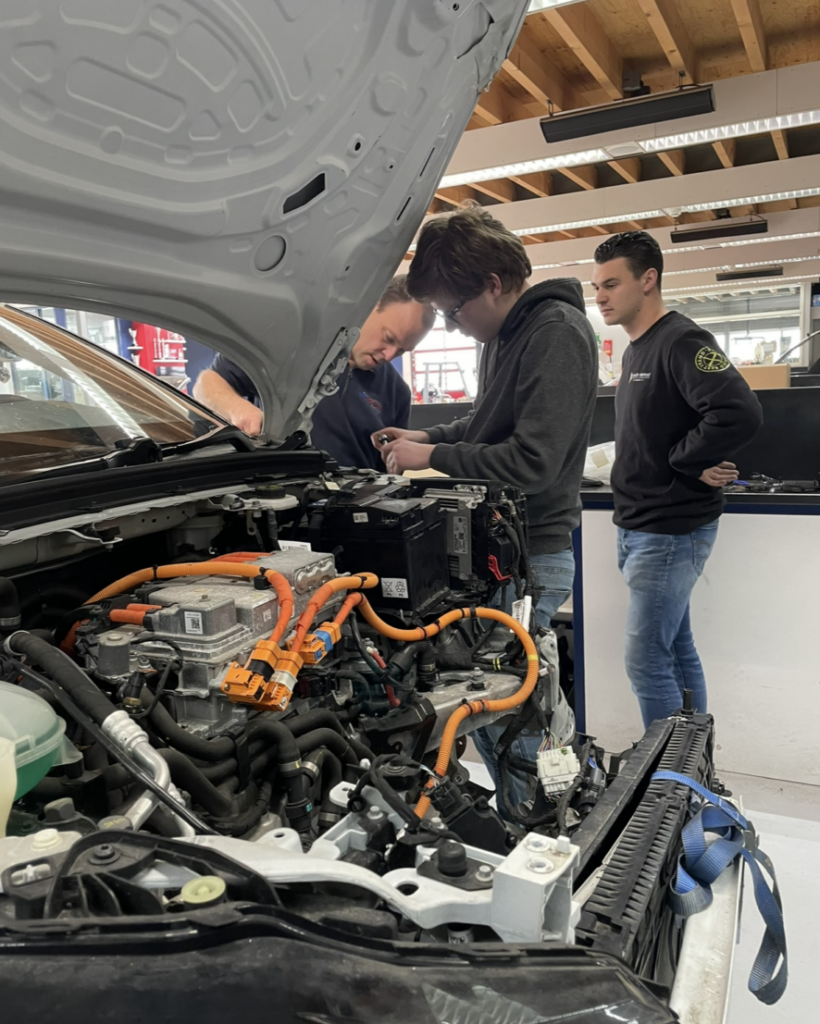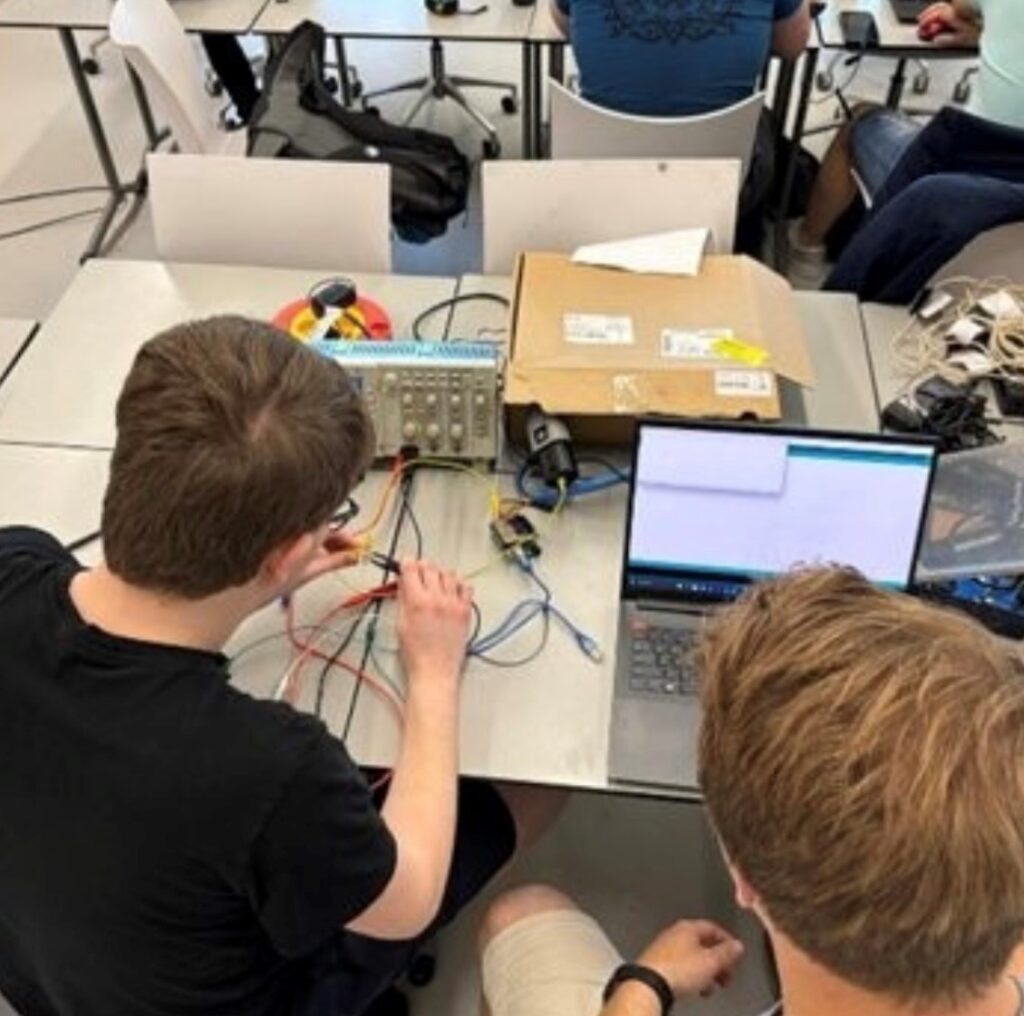Since the beginning of 2024, Bas Koeten Racing’s Motorsport Techlabs program has gained significant momentum. Several innovative projects, both on and off the track, are being developed under the radar. One of these projects has now entered a new phase, and the time is right for an initial release.

“Two Working Deep Fryers”
Bas Koeten: “In collaboration with Fontys University of Applied Sciences, specifically the Electric Drive minor, we managed to convert a Polestar street car with three students so that it can serve as mobile energy storage. It can both charge and discharge. The idea was born because we have over 700 solar panels on our workshop in Westwoud, and we wanted to do something with the storage and transport of green energy in light of the much-discussed grid congestion. Roll up your sleeves and get to work. The students have done an amazing job. At one point, just before the summer vacation, the students sent us a photo of our Polestar powering two working deep fryers. They actually pulled it off! I was speechless for a moment. This is no small feat. Now that the new academic year has started, a new group has taken over the assignment to continue to the next phase. The results of this will be shared at a later stage, just wait and see.”
“Incredibly Proud of Brilliant Minds”
Jelle Koeten adds: “Within our Motorsport Techlabs program, we develop people and technologies. Talent development of young engineers, but also of drivers. We have several projects running, and we share news about them step by step. We also collaborate with students on projects involving hydrogen, fuel cells, fast chargers, and so on. We are also supporting driver Calvin de Groot, who is successfully participating in the NXT Gen Cup, the world’s first 100% electric touring car class. In two weeks, he will compete for the title in this class during the DTM event at Hockenheim. The Polestar project with Fontys University comes from Bas’s vision to make a personal contribution to energy management. Using resources available on the market, plus a few brilliant minds, engineers in the making. With that, we want to experiment and achieve success. This has been an incredible success, and we are immensely proud of it.”
Below is the article from Fontys University about our collaboration:
Your car as a ‘power outlet’ for your deep fryer: it’s possible!
Powering household appliances with electricity from your car. It sounds too good to be true, but three students from the Fontys Automotive Electric Drive minor made it happen. “The fryer has already been running.”
Student Justin Griffioen, along with fellow students Tim van Bavel and Nick Brouwers, received an assignment from one of the partners of the Electric Drive minor: Bas Koeten Racing. “Bas has a lot of solar panels on his business premises and owns a Polestar, an electric car,” Justin explains.
Koeten wanted to use his ‘extra’ energy and asked the three students to figure out if the car could also serve as a home battery. “He even bought another Polestar for us to test this.”
Polestar at the Doorstep
However, it wasn’t easy. Justin, along with Tim and Nick, visited Koeten’s company to brainstorm about the research and possible solutions. “We were able to convince him to work with an actual physical car. Not long after, a Polestar was indeed parked at the doorstep,” says Justin enthusiastically.

A small sidenote: the car they were working with was actually a damaged vehicle that the trio had to repair before they could get it running. “In the end, we managed to enable the car to charge and discharge. That was truly surreal.”
Fast Charging
The ultimate goal of the three students was to convert the car’s power so that it could be used in the home. “We ended up creating our own circuit board for an Arduino that manages communication with the car. This data is then sent to a Raspberry Pi (a single-board computer) to decode and communicate that the car is connected to a fast-charging station. This allowed us to discharge the car using an inverter.”
Justin, Tim, and Nick were eventually able to convert the car’s power (400 volts DC) to the electricity typically needed for home use (three-phase 230V AC) and store it in a battery. Justin explains: “That battery delivers the same energy as your power supplier’s grid connection. So your washing machine, lights, laptop, and TV can all run on it. In that sense, our solution provides an additional energy source for your home.”
Frikandellen
To demonstrate their results, the students cooked frikandellen (Dutch snacks) in deep fryers during a group barbecue, using electricity drawn from the Polestar via the inverter. “Tasty snacks for our fellow students, but they were also incredibly excited about the process behind it,” says Justin.
This excitement has been echoed by many on LinkedIn, where Justin shared his team’s findings. “We’ve been invited by various companies to test our inverter system. Even companies that work with Lightyear (the solar-powered car) and Polestar themselves have reached out to us.”

Improving and Installing
What the future holds for this project is still uncertain for Justin, but he has already received several internship offers. “Now it’s up to the next group to continue this project. They will improve our proof of concept and possibly install it at Bas Koeten’s home. Do I find it hard to let go? Not really. One of my teammates will remain the point of contact for the new students, so I know it’s in good hands with him.”
Justin also realizes that he and his group have sparked a literal surge in innovation. “The industry now knows that converting power for home use is possible. Many manufacturers had planned to start producing charging stations capable of this earlier this year, but none have hit the market yet. The fact that we’ve proven it’s possible may well accelerate the entire process.”
Source: https://bron.fontys.nl/je-auto-als-stopcontact-voor-je-frituurpan-het-kan/

